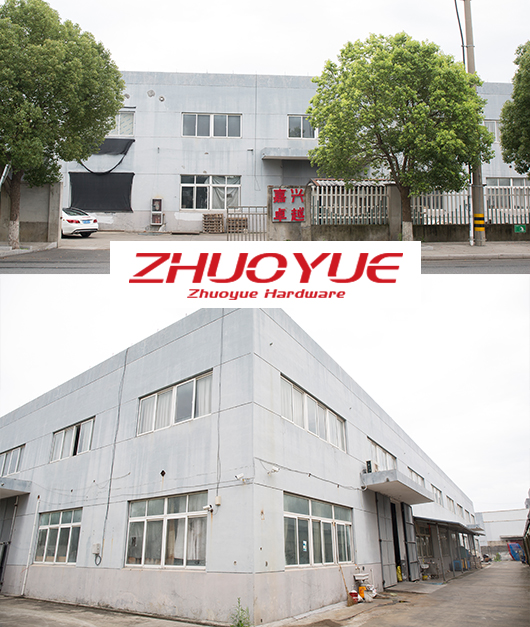Poleline Hardware
Poleline Hardware Manufacturers

About
Jiaxing Nanhu District Zhuoyue Hardware Factory Is China Power Utility Electrical Accessories Suppliers and China Poleline Hardware Manufacturers. Jiaxing Zhuoyue Hardware Company, We are a metal stampings for parts Manufacturer was founded in 2006, main products are various kinds of hardware for power utility and home appliances. The annual capacity for TV bracket exceeds 1,10 0,000 pcs. After having emotional management for over 17 years, we have developed a mature operation team and an experienced technical team to develop samples according to sketch with competitive price and high quality, on-time delivery. Also provide professional advice and solutions.
Customization
We can develop and produce products according to the drawings or samples the customers offered.
Quality & Cost
We have our own production and processing facilities, which are directly sold by manufacturers and offer high-quality and affordable products.
Media & Events
Company News

Hardware accessories are essential tool consumer goods for people's daily lives
Hardware accessories refer to machine parts or components made of hardware, as well as some small ha...
Industry News
-
The horizontal adjustment function of the TV stand: the art of optimizing the viewing experience
In the modern home environment, the TV is the center of family entertainment and information acquisition. Its placement and viewing angle directly affect the qu...
-
Wear resistance: the key to the durability of hardware accessories
In daily life and industrial production, hardware fitting are key components for connection, support or movement, and their performance directly affects the sta...
-
Sheet metal parts: the dual guardians of strength and rigidity
In the vast world of modern manufacturing, sheet metal parts have become an indispensable cornerstone in many product designs with their excellent physical prop...
-
Sheet metal parts: multifunctional guardians in final products
On the vast stage of modern industrial manufacturing, sheet metal parts have become an indispensable part of many final products with their unique advantages an...
Industry Knowledge
What are the latest advancements in power utility pole line hardware technology?
Composite Materials: The use of advanced composite materials, such as fiberglass and reinforced polymers, in power utility pole line hardware has increased. These materials offer excellent strength-to-weight ratios, corrosion resistance, and durability. Composite insulators, crossarms, and braces are becoming more common.
Smart Grid Integration: Power utility pole line hardware is being equipped with sensors and communication devices as part of the smart grid initiative. These sensors monitor parameters like temperature, vibration, and load, allowing for real-time data collection and remote monitoring. This data helps utilities make informed decisions about maintenance and grid optimization.
Predictive Maintenance: Advanced analytics and machine learning algorithms are used to analyze data from sensors on power utility pole line hardware. This enables predictive maintenance, where potential issues are identified before they cause failures, reducing downtime and improving system reliability.
Self-Healing Grids: Self-healing grid technologies use automation and remote control to reroute power, isolate faults, and restore service automatically. Power utility pole line hardware is a crucial part of this system, enabling faster fault detection and reconfiguration.
What role does standardization and compliance with industry regulations play in the manufacturing and testing of power utility pole line hardware to ensure safety and interoperability?
Safety Assurance:
Industry Standards: Standards developed by organizations like ANSI (American National Standards Institute), ASTM (American Society for Testing and Materials), and IEEE (Institute of Electrical and Electronics Engineers) establish safety requirements and guidelines for power utility pole line hardware. Compliance with these standards ensures that the hardware meets specified safety criteria.
Worker Safety: Standards address worker safety during the installation, maintenance, and repair of power utility pole line hardware. This includes guidelines for safe working distances, personal protective equipment, and safe practices.
Public Safety: Adherence to standards also contributes to public safety by preventing failures that could lead to electrical outages, fires, or other hazards.
 English
English 中文简体
中文简体











